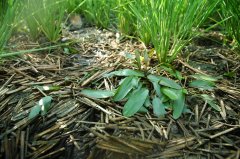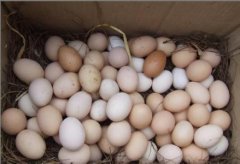How to detect soil fertility different texture soil fertility characteristics are the same? How to rationalize fertilization
Soil is the basis of crop growth. In the process of cultivation, too much fertilizer is applied, which will not only waste fertilizer resources and pollute the environment in the long run, such as nitrogen pollution of groundwater, high nitrate concentration of plants, etc., but also easily cause soil "disease" deterioration. It is difficult to provide elements for crop absorption, thus affecting yield and quality.
Therefore, agricultural administrative units try their best to promote rational fertilization, which can avoid excessive application of fertilizer and is beneficial to the sustainable use of farmland. Rational fertilization means that farmers adjust the amount and methods of fertilizer application according to the growth characteristics of crop varieties, soil conditions and characteristics, the types and characteristics of fertilizers, and the response to crop growth after application into the soil.
However, how should rational fertilization be operated? Huang Ruizhang, associate researcher of crop environment course in Tainan District Agricultural improvement Farm of the Agricultural Commission of the Executive Yuan, who is known as a "soil nutritionist", explained that rational fertilization involves three steps: first, sampling soil for fertility analysis; thirdly, fine-tuning fertilization in line with crop growth and climate change In the end, because fertilizers are not 100% absorbed by crops after application, efforts should be made to improve fertilizer efficiency.
Soil fertility analysis report is an important basis for rational fertilization; today, with increasing attention to science and data, the soil fertility analysis report is an important reference for farmers to adjust the amount of fertilizer application and improve the efficiency of fertilizer application. At present, agricultural laboratories and improvement farms provide free soil fertility analysis services, write articles and hold workshops to teach farmers how to sample, and farmers can also entrust institutions with laboratory certification to inspect them at their own expense.

Huang Ruizhang warned that when farmers take samples, tools such as round shovels, transplant spades, or soil drills should be cleaned up, remember that the soil is not too wet, and try to send soil samples to the inspection unit 3-4 weeks before applying base fertilizer. In terms of sampling frequency, short-term crops such as leafy vegetables are sampled and sent for inspection at least once a year, and do not need to be sampled in every period; for long-term crops, if trees, they can be sampled and sent for inspection once in 1 ~ 2 years.
When the soil samples are filled, you can use a self-made sample bag or a clean plastic bag, and fill in the name, address, contact number, crop type, lot number, etc., in the sample bag, and send it to the agricultural laboratory or improvement site. Soil fertility analysis report can be received in about 2-3 weeks.
Agricultural administration units are intimate with notes, and farmers can understand it as soon as they get the report.
The soil fertility analysis report includes seven types of items: soil electrical conductivity (EC), soil pH value (pH), soil organic matter, soil available phosphorus, potassium, calcium and magnesium. Huang Ruizhang added that some agricultural land is divided into salt, and agricultural improvement farms will test sodium again to prevent sodium ions in the soil from affecting the soil aggregate structure, which is not conducive to the absorption of potassium and calcium ions by crops and root growth. When farmers get the soil fertility analysis report, in addition to listing the test values of seven types of items, the high will be marked in red, and blue indicates that the value is low, which can be reinforced. The report is also attached to the fertilization recommendations of agricultural improvement farm researchers for growing crops, so that farmers will no longer be confused when reading the report.
There is antagonism between different nutrients, and if some elements are difficult to absorb, they can also be supplemented by foliar fertilizer. Huang Ruizhang said: in general, short-term crops can refer to the soil fertility analysis report to improve the efficiency of fertilizer application; if farmers want to understand the absorption status and nutritional disorders of long-term crops, they can further do plant (leaf) nutrition diagnostic analysis. the sampling location and timing of different crops can refer to agricultural laboratory, improvement site website information, or call to inquire.
As for the reported lack of soil organic matter in small fruit tomato planting, it will reduce soil aggregate structure and nutrient availability. Huang Ruizhang said that if it is sandy soil, there is no problem with good drainage. It is recommended to apply low-fertilizer organic compost with high crude fiber content in plants, such as bark compost, bagasse compost, cow manure compost, rice straw or rice husk compost, which is about 600 to 800 kilograms per cent. However, sandy soil is not easy to preserve fertilizer, so it is necessary to apply a small amount of fertilizer several times, and the recommended amount of fertilizer should be increased by 10%.
Because the characteristics of each farmland are different, researchers in agricultural laboratories and improvement fields must, like detectives, consider the characteristics of the local soil, whether farmers are cultivated in the open air or in facilities, and peel off their cocoons one by one according to the types of crops and their commonly used fertilizers. After evaluating various values, make the most suitable recommendation for fertilization. Huang Ruizhang also cited the soil fertility analysis report of another small fruit tomato farmer as an example. The report showed that the pH value was less than 5.5, the electrical conductivity was 2.3 dS/m, the phosphorus was more than 500mg / kg, and the potassium was more than 1500 mg / kg. Not only the soil was slightly acidic, but the electrical conductivity, phosphorus and potassium were also much higher than the normal value.
"it may be that farmers overapply phosphorus and potassium fertilizer in order to make the fruit sweet, forming" pseudo-acidity ". The real acidity is that calcium and magnesium will be on the low side. Huang Ruizhang said that this situation is very common in protected cultivation. Because of the lack of Rain Water leaching, fertilizer is easy to accumulate too much, so it cannot be improved with bitter soil lime to avoid higher electrical conductivity. on the contrary, farmers should be advised to wash salt and acid ions away, and the pH value will naturally rise.
In order to give farmers a basis before fertilizing, agricultural laboratories and improvement farms are almost as soon as possible in about 2 weeks, sending soil fertility analysis reports to farmers. Huang Ruizhang says that usually during autumn or spring cropping, a large number of soil samples are submitted for testing, because the Nankaichang area covers agricultural counties and cities such as Yunlin, Chiayi, and Tainan. For example, from September to October this year, an average of more than 1,000 samples were received each month, and the time for farmers to wait for the report may be extended to three weeks.
The data of seven types of fertility analysis projects are obtained through instrumental analysis, and the professionals check whether the data are normal, and then they are compiled into soil fertility analysis reports, which are recommended by experts in charge of different crops and sent to farmers. For example, there are different experts responsible for the cultivation of rice, small tomatoes, cantaloupes, miscellaneous grains, flowers and organic crops, who write fertilization recommendations according to their respective professional assignments and attach a contact telephone number. If farmers still have questions after reading the report, they can call or join the exclusive social software group of the agricultural improvement farm. For example, Nangzaofang has a LINE@ life circle, which can instantly take photos and upload or write messages to ask about crop nutrition and pest management.
Of course, after farmers get the soil fertility analysis report, it does not mean that it will be foolproof from now on. Huang Ruizhang said that the report cannot predict the climate and crop growth after 2 to 3 months. Farmers should continue to accumulate experience, fine-tune fertilization in line with crop growth and climate change, and usually attend agricultural workshops to increase relevant knowledge.
The soil fertility analysis report can be said to be the painstaking work of the laboratory staff of agricultural laboratories and improvement farms. A reliable report relies on correct soil sampling methods, sample pre-treatment, operation and maintenance of analytical instruments, digital interpretation, and so on. Through soil health inspection, it can help farmers to detect and adjust soil problems as soon as possible, and increasingly move towards the goal of rational fertilization.
- Prev

When is the blooming time of the water clover? Is there a dormant period for how to reproduce water fish?
The generic name (Ipomaceae) of the Taiwan water bream, which in Latin means that the plant grows in a swamp. Because its tubers are rich in starch, in the early days of lack of materials, farmers would remove the bark of their tubers and cook them with sugar as a snack.
- Next

The price of eggs in Taiwan has soared and stabilized, and the balance between supply and demand has stabilized the price of eggs.
When the national egg shortage crisis broke out in February this year, the Council of Agriculture once imported eggs from abroad to meet the domestic demand for eggs. at that time, the price of eggs was as high as 36.5 yuan per jin, but since March, the price of eggs has gradually stabilized, and the land price of eggs reached 31 per jin on April 15.
Related
- A course of planting techniques and methods on how to grow carrots
- How to plant the latest tulips?
- Is it better to pick tea in the morning or in the afternoon? When is the best time for tea to be picked? what is the third or fifth tea?
- Launch Yuanxiao Happy combination Haocha + Tea Yuan healthy Taste
- Penghu Tourism "Fireworks 20 Parade with You"
- 2022 West Lake Happiness holds "Digital Revitalization Voucher" and draws iphone13 and laptop.
- Banqiao Fuzhou social houses are designed to change start-up combined with police elimination to create a safe and livable environment
- The convenient measure of "mechanical weeding" in Xinbei has been abused and the Agriculture Bureau has imposed heavy penalties on the illegal land consolidation.
- Changgeng University Joins Hands with Four Memory Factories to Rescue Memory Talent Shortage
- The list of Taiwan's top 100 MVP managers is listed by the Director-General of the Farmers' Association of Sanxia District.

